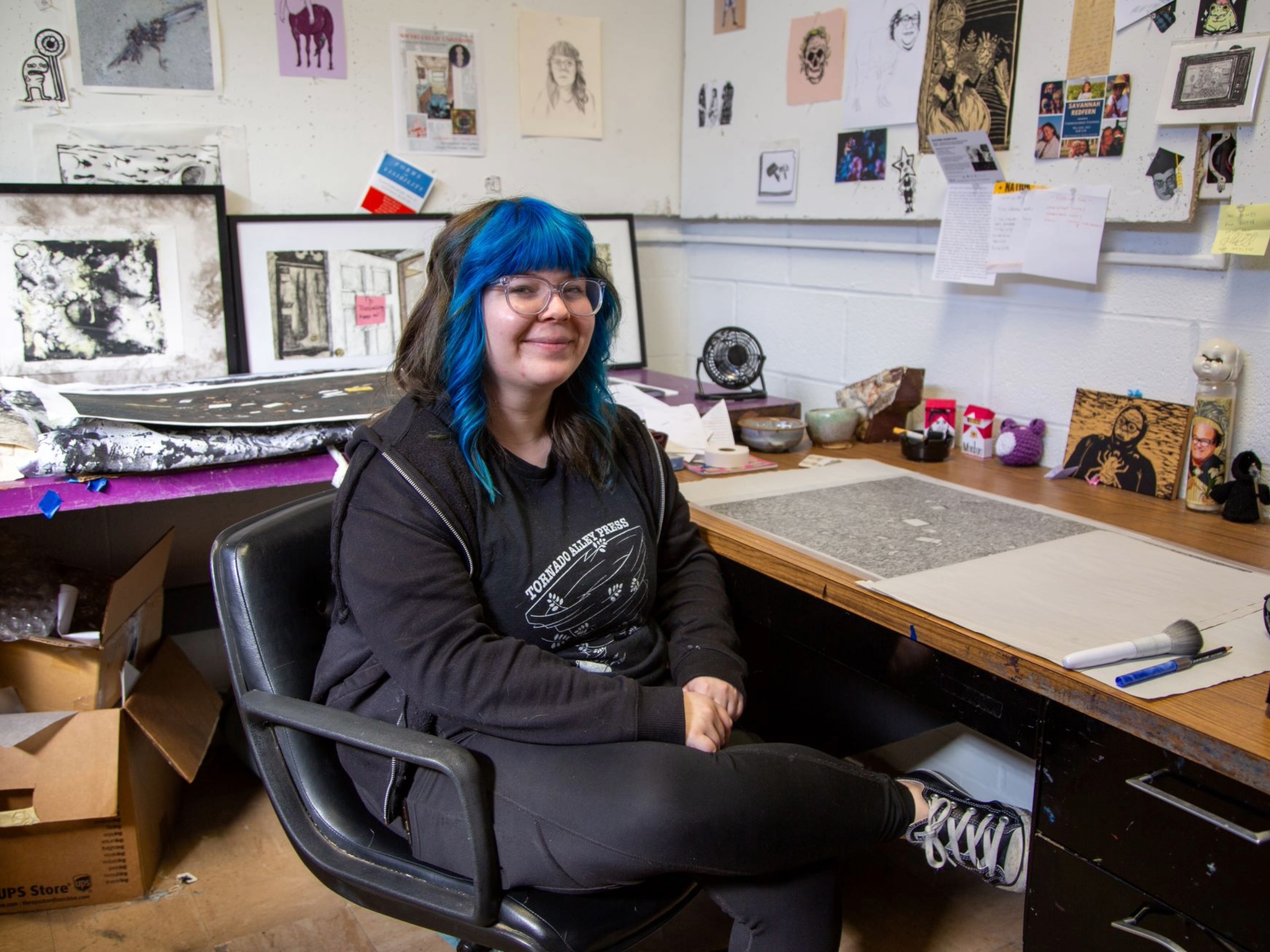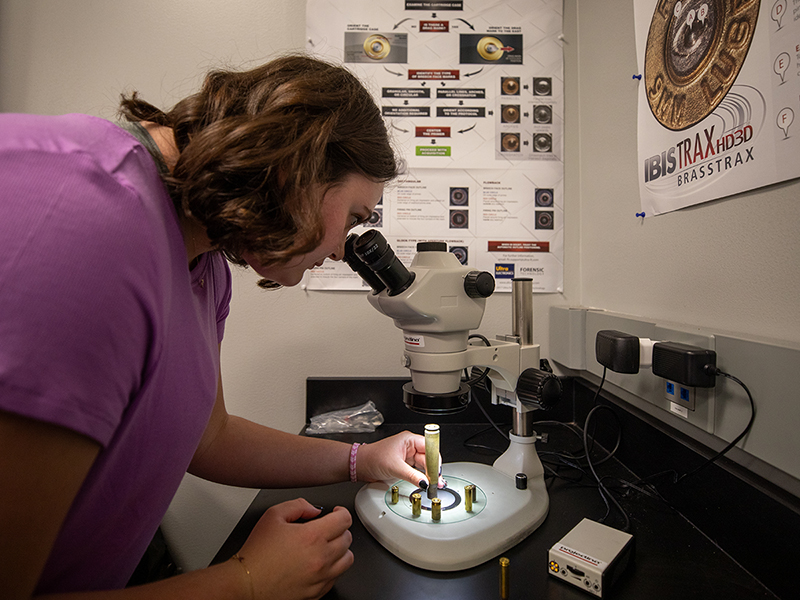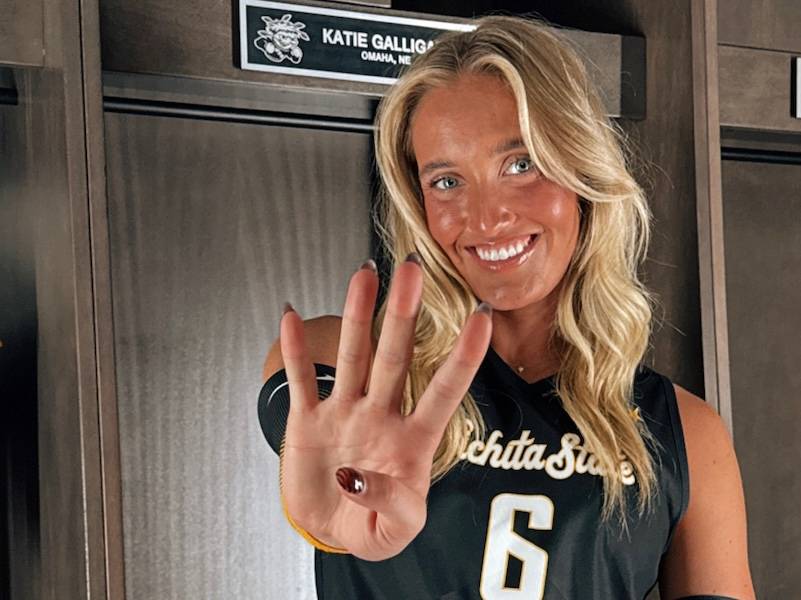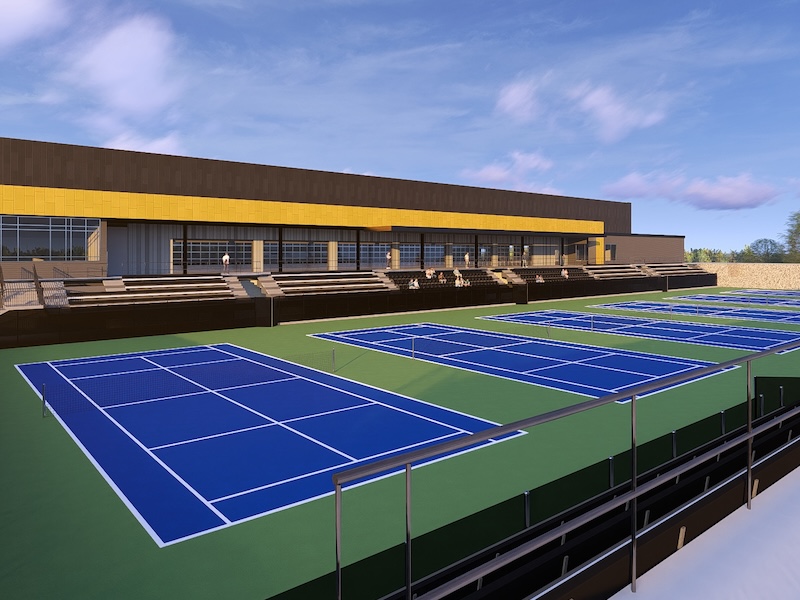Zoë Gillis’ work challenges the accuracy of memory through layered reconstructions of images. Originally from Eureka, Kansas, Zoë is graduating with her MFA in Studio Art with a concentration in printmaking from Wichita State University’s School of Art, Design and Creative Industries.
What materials and processes do you use to create your work?
I specialize in nontraditional methods of printmaking—which is an umbrella term for a bunch of different processes—but I mainly create using a hybrid process between lithography and screen printing. A lot of my prints look like drawings with watercolor, some of that has to do with the transparent film typically used for lithography that I draw on, but it’s also an effect of me essentially printing backwards. Normally when you make prints, you’re working from background to foreground with your very last layer being all the black lines - your key. I print my key layer first, then add each individual layer of color on top of that. It helps me register my layers, and I think the translucent quality of the ink adds depth to the final piece.
What inspires your work?
The imagery of my work is sourced from photos of the living space I shared with my mom from 5th grade to my senior year of high school. Thematically, my work touches on loss, class, grief; unpleasant things that I believe most people shy away from openly talking about. My aim with this current body of work is to force people to be confronted with things that they may not be comfortable with, but in a way that allows them to see the beauty in the amount of work it takes to process these things mentally.
Do you think printmaking is the best medium for this type of work?
Yes! For most memory-based work, you often get the question, “Why not just photos?” I think for me, the photos I’m sourcing for reference look a lot different than the final print. Even though it’s accurate, it’s slightly different, and I think that’s similar to how our memories work. We’re not as objective as we’d like to think we are when we remember things; we always have our own connotations and emotions attached - like an unreliable narrator. The memories and spaces are through my eyes, so the accuracy of the space is skewed by all these layers of colors and abstractions; my emotions imposing on the scene like a physical stamp.
How do you manage the emotional labor of reliving these memories - something necessary in creating these pieces?
I first want to say that I don’t think it’s for everyone. It’s okay as an artist to not feel comfortable giving viewers a look into your personal trauma. For me, I feel like doing this—talking about it—is the only way it does help me. It has the potential to be as damaging as it is healing, so it’s important to recognize the difference between analyzing feelings and picking at them like a scab. I’ve gotten good at checking in with myself, and if I feel like I’m ruminating on negative feelings I may switch to doing something repetitive or comforting like printing rather than meticulously recreating an image of my mother’s bedroom. I also take breaks, giving myself time to just exist, not thinking about making work. There was a time early on when making this work that I felt I was taking a lot from myself and not giving anything back, but I think overall making this work has helped me talk about those feelings in a more articulate way than I was able to in the past. I think a lot of people could benefit from something like that.
Your body of work contains such deep personal narratives. How do you separate yourself from that when being critiqued?
Something big my professors did early on was make me very aware that they were not attacking myself nor my work; they were questioning my choices when making my work, which is important no matter what you’re making work about. I knew early on that if I was going to do this type of work, I was going to have to have a conversation about it. For me, the time I spend making the work is when I’m gathering my thoughts for critique. Sometimes I’ll take notes on certain choices I made in my process, listing adjectives that come to me while drawing, or memories that seem to be standing out to me.
Zoë will be exhibiting her terminal project, “Out in the Open,” at Fisch Haus from Friday, April 5th to Friday, April 26th—with an opening reception on Friday, April 5th from 6-9 p.m.
You can find more of Zoë’s work on her Instagram
All stories College of Fine Arts home






